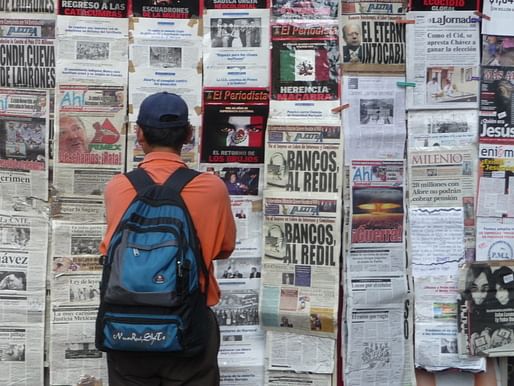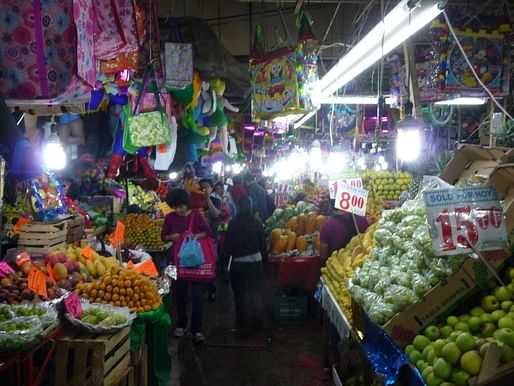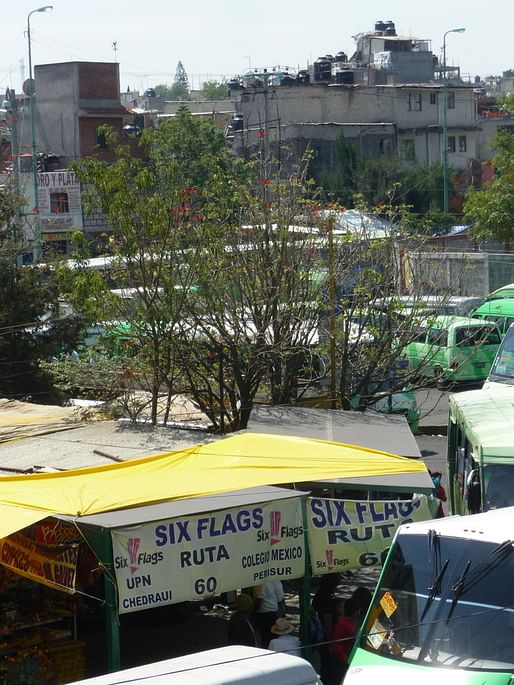
May '13 - Feb '16
Commerce is seen everywhere in public spaces in Mexico City, at every scale of space and legitimacy. The spaces required for the transactions of life vary wildly:





Wide sidewalks are also crucial for the food cutlure here- around lunchtime, the taco and torta stands unfold on the sidewalk, tap into local power lines, and parasitaically string up tarps from light poles and any vertical surface to provide shade and rain protection for thier customers, who also stand on the sidewalks and eat. Where I usally eat lunch, the cart/cooking space sits on perhaps 5' of sidwalk width, and as many as a dozen diners will either cluster close to the cart or lean against the wall of the adjacent building, forcing pedestrians to maneuver between.

In some ways it is a violation of public space, but it seems to be a given. I've never seen a Chilango get angry or upset because they had to squeeze through a thick crowd of people eating tacos. Since so much of the city's econmic activity takes place in public spaces, its temporary appropriation is an obvious consequence, and because everyone participates, nobody protests.

This sunday, I went to the street market out north of the Garibaldi station. Actually, it's a unbelievable conglomeration of several markets including several permanent market halls, merged into a continuous market covering about kilometer and several intersecting streets.
Architecturally and urbanistically, its in an inversion of space- during the week, the street is a void bounded by the occupied buildings on either side. During the market weekends, the street becomes entirely filled with stalls, enclosed on all sides with tarps, protected from the elements. The buildings on the side of the street disappear- they either become invisible because the pedestrian is inside the market and their street facades blocked by vendors, or it its absorbed by the market, with visitors flowing in and out in the continuous market space.

I was there because I wanted to see a recommended antiques market. It was a bit like the old markets in Beijing, and a bit like a flea market. Lots of antique brass, records, rocks, carvings, paintings, housewares, jewelry, collectors toys, clothes, hats, ad nauseum.
The antiques market flows along one side of a major street and entirely fills an intersecting street. Plunging down this antique market street, it slams into a more typical street market of clothing, shoes, CDs, haircuts, aguas, beer, watches, etc. If you turn left and follow the major street market, you'll come to a part where the antique market intersects it again. The antiques market literally wraps all the way around the block, so I followed the antiques away from the street market back to where I started, and looped in again, this time going right. The street market took me all the way back to the metro station and a massive collection of market halls selling almost everything that is possible to buy.
There is a giant fruit and vegetable market in Mexico City in the historic center, a vast hall filled with stalls and vendors. This building is invisible because it is surrounded by second ring of markets of various temporality. The ring is so thick, when you emerge from the metro, you emerge in the middle of the market.
Or to be more accurate, I emerged into a full scale flood. The first sign of trouble was the waterfall cascading down the metro stairs. The market was under the seige of a torrential downpour of rain and the tarp coverings and patched roofs only go so far. There was rain from above, water coming up from the overwhelmed drains, and the crowds of people choking the narrow alleys of the market literally brought everything to a standstill. It's actually quite claustrophobic because there's really nothing you can do except shove along with the crowd. There's no outlet and no escape except literally into the merchandize filled stalls on either side. Needless to say, I could have picked a better time to visit the market.
Urban and architectural explorations from Mexico City to Stuttgart Germany through the eyes of a iterant architectural designer
1 Comment
Very informative. Very good insight must say. Could have improved a bit more on the photographs would be my only suggestion.
Block this user
Are you sure you want to block this user and hide all related comments throughout the site?
Archinect
This is your first comment on Archinect. Your comment will be visible once approved.